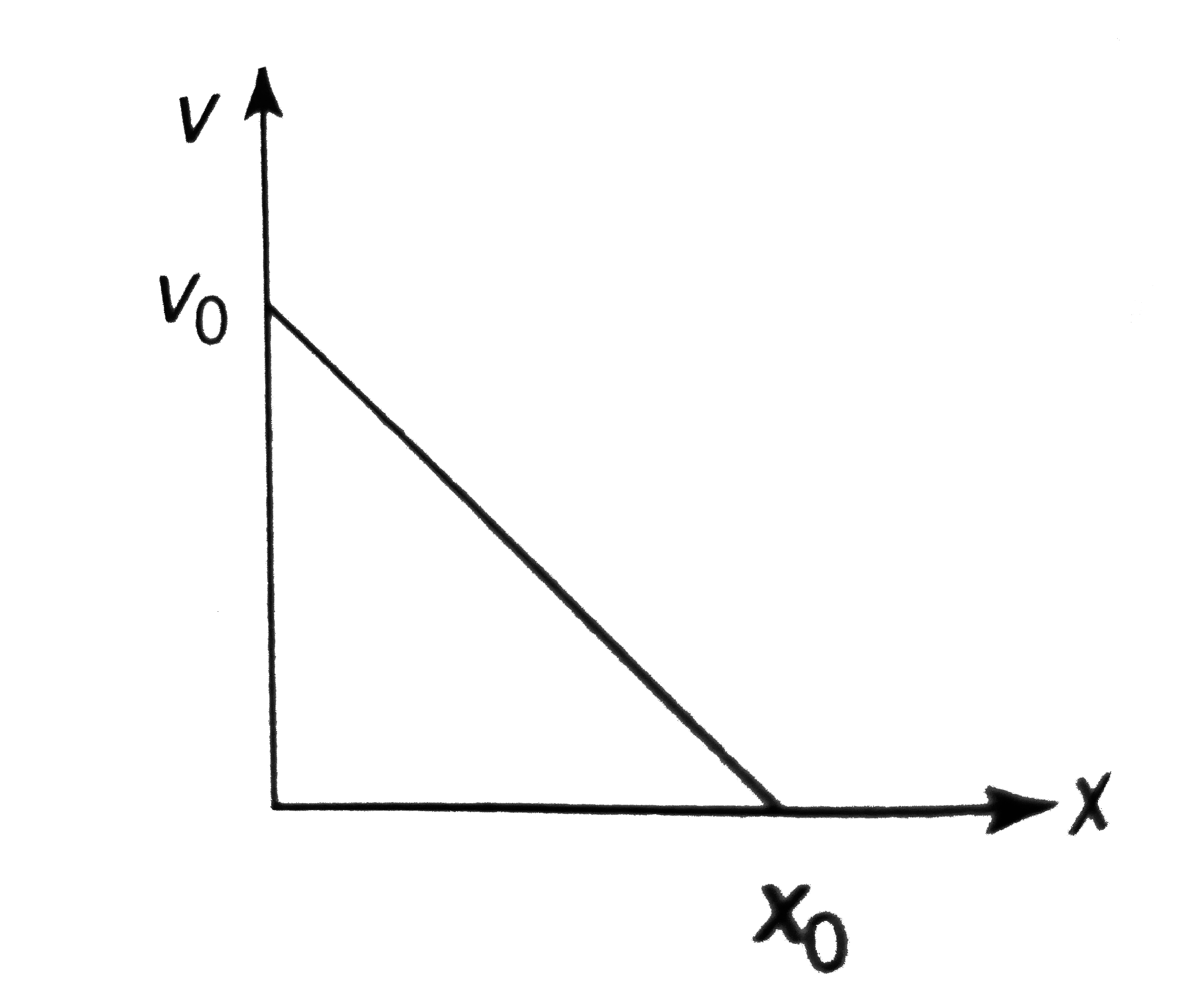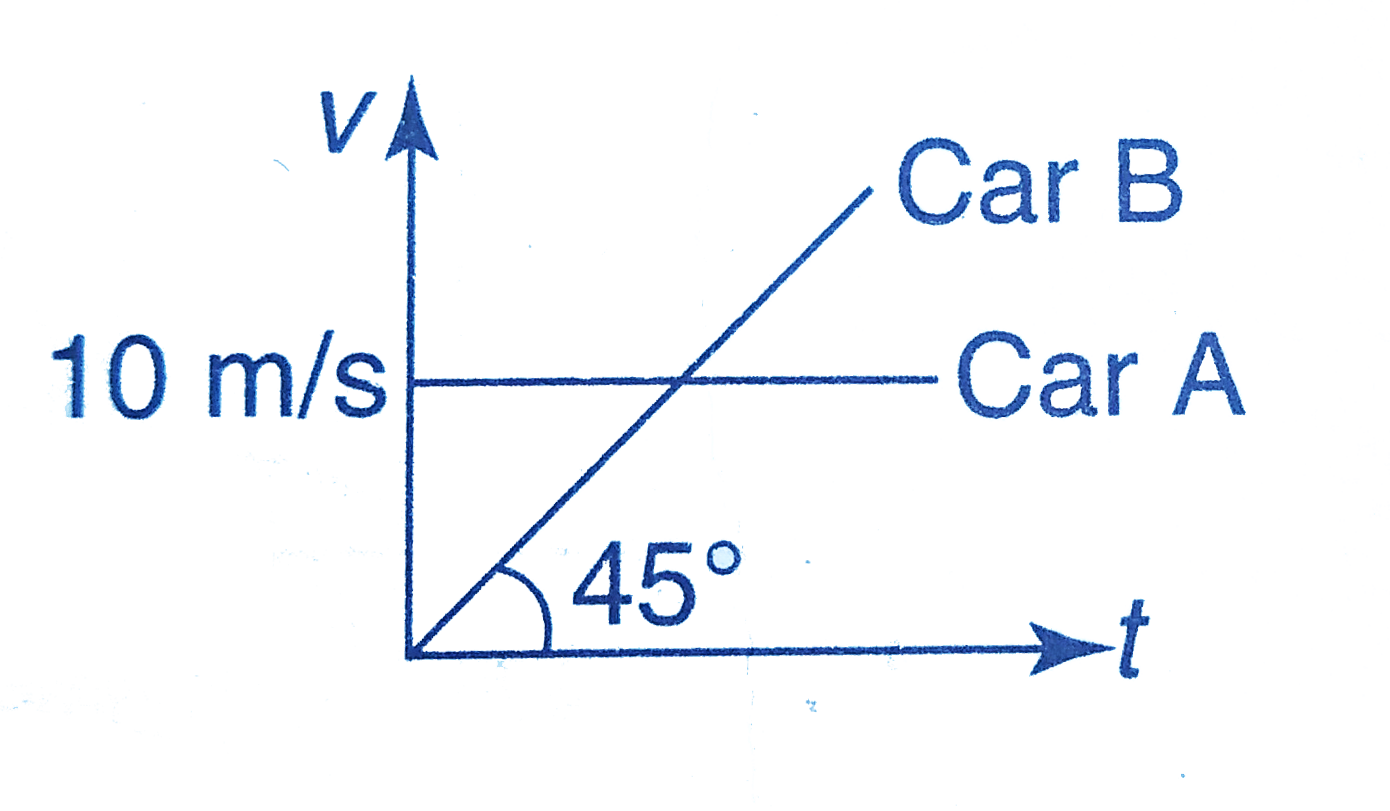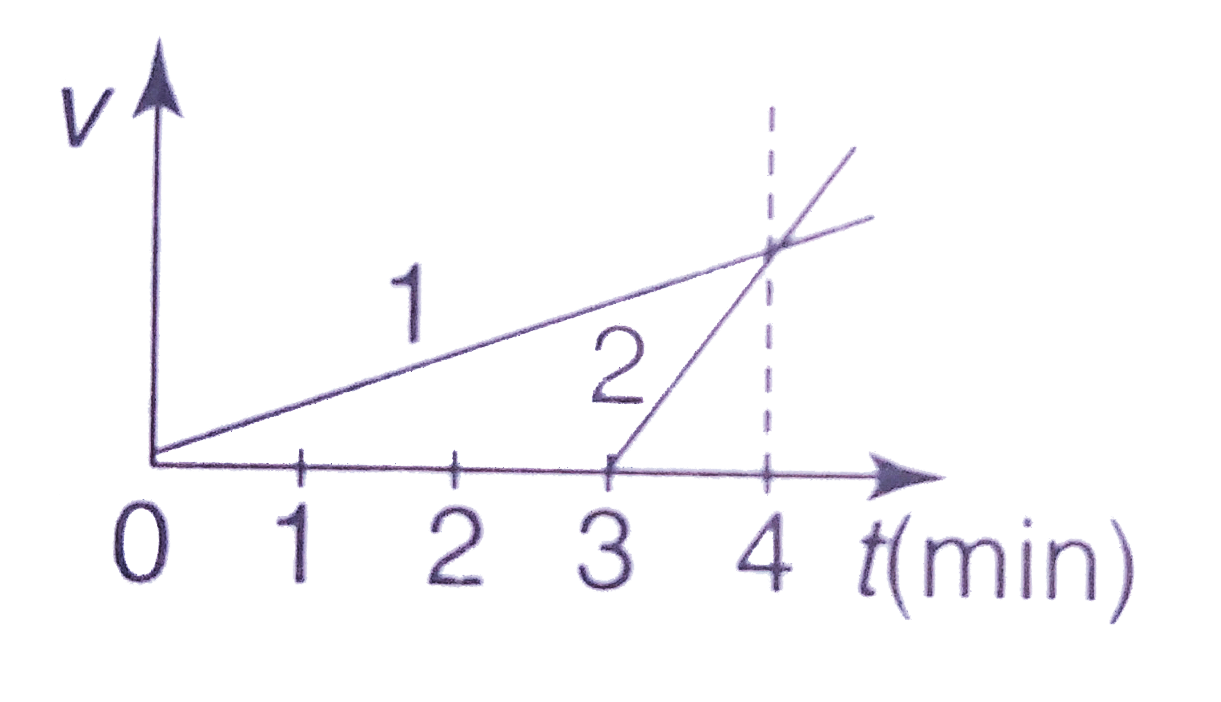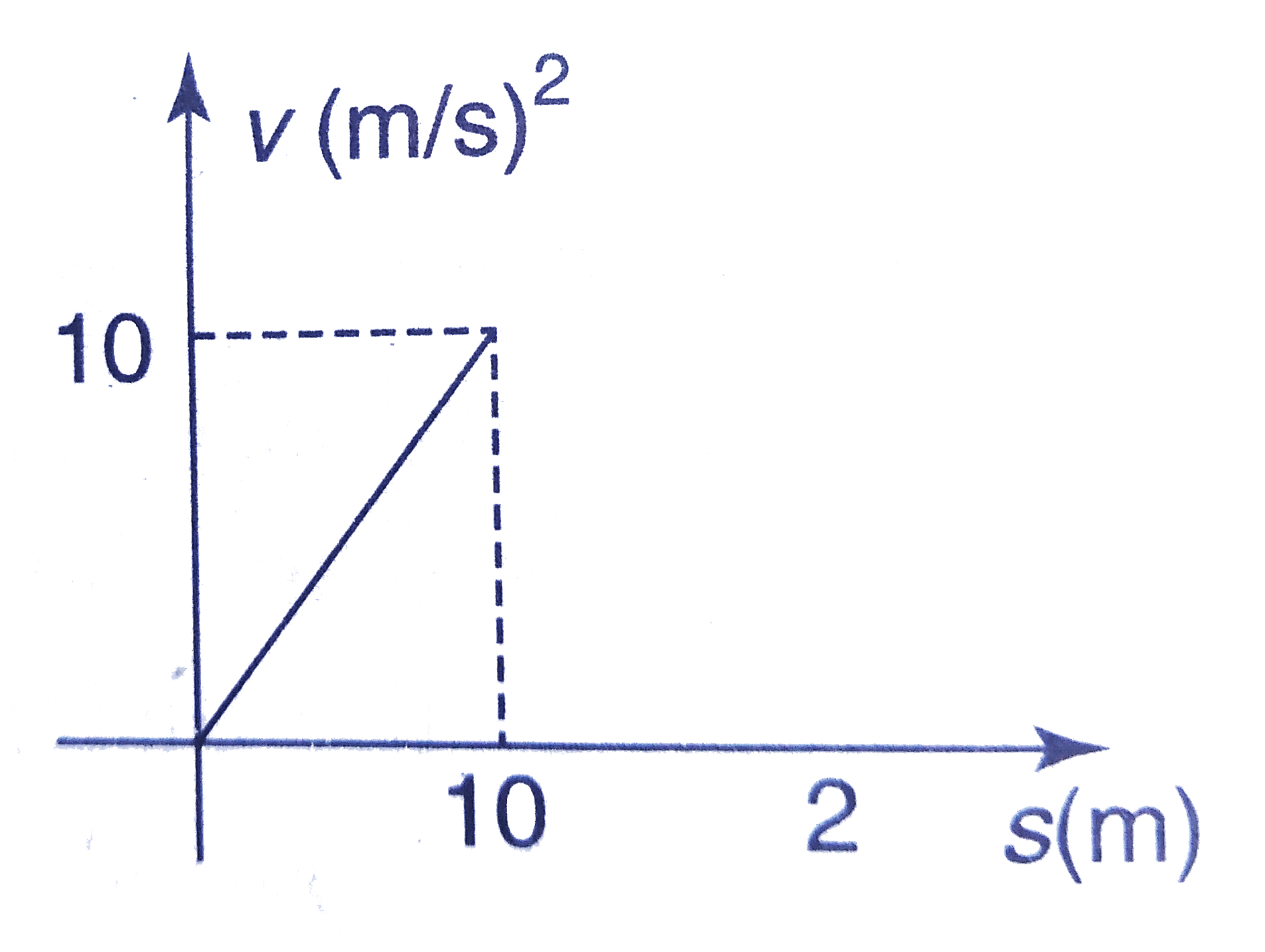Complete Solutions to Problem Based On Mixed Concepts of chapter GENERAL KINEMATICS AND MOTION IN ONE DIMENSION of Class 11 book with complete answers and questions
| Class 11 | PHYSICS |
| Chapter | GENERAL KINEMATICS AND MOTION IN ONE DIMENSION |
| A2Z | Problem Based On Mixed Concepts |
| Number Of Questions | 30 |
| Academic Year | 2023-24 |
The given graph shows the variation of velocity with displacement. Which one of the graphs given below correctly represents the variation of acceleration with displacement ?
 02:49View Solution
02:49View SolutionThe displacement of a particle is moving by `x = (t - 2)^2` where `x` is in metres and `t` in second. The distance covered by the particle in first `4` seconds is.
03:45View SolutionA car is moving with uniform velocity `10 m//s`. After `t = 5 sec`, brakes are applied to produce constant retardation and car comes to rest at `t = 10 sec`. The position time graph from `t = 0` to `15 s` is.
06:32View SolutionInitially car `A` is `10.5 m` ahead of car `B`. Both start moving at time `t = 0` in the same direction along a straight line. The velocity-time graph of two cars is shown in figure. The time when the car `B` will catch the car `A`, will be.
 04:07View Solution
04:07View SolutionA ball is dropped vertically from `a` height `d` above the ground . It hits the ground and bounces up vertically to a height ` (d)//(2). Neglecting subsequent motion and air resistance , its velocity `v` varies with the height `h` above the ground as
04:50View SolutionThe drawing shows velocity (v) versus time (t) graphs for two cyclists moving along the same straight segment of a highway from the same point. The second cyclist starts moving at `t = 3 min`. At what time do the two cysclist meet ?
 07:12View Solution
07:12View SolutionA train normally travels at a uniform speed of `72 km//h` on a long stretch of straight level track. On a particular day, the train was forced to make a `2.0` minute stop at a station along this track. If the train decelerates at a uniform rate of `1.0 m//s^2` and accelerates at a rate of `0.50 m//s^2`, how much time is lost in stopping at the station ?
05:35View SolutionTwo objects moving along the same straight line are leaving point `A` with an acceleration `a`, `2 a` and velocity `2 u, u` respectively at time `t = 0`. The distance moved by the object with respect to point `A` when one object overtakes the other is :
04:26View SolutionThe speed `v` of a car moving on a straight road changes according to equation, `v^2 = 1 + bx`, where `a and b` are positive constants. Then the magnitude of acceleration in the course of such motion : (x is the distance travelled).
01:53View SolutionWhen two bodies move uniformly towards each other, the distance between them diminishes by `16 m` every `10 s`. If bodies move with velocities of the same magnitude and in the same direction as before the distance between then will decrease `3 m` every `5 s`. The velocity of each body is.
03:40View SolutionA particle is thrown upwards from ground. It experiences a constant resistance force which can produce a retardation of `2 ms^-2.` The ratio of time of ascent to time of descent 13 (`g = 10 ms^-2`)
07:59View SolutionA particle moving along a straight line with a constant acceleration of `-4 m//s^2` passes through a point `A` on the line with a velocity of `+ 8 m//s` at some moment. Find the distance travelled by the particle in `5` seconds after that moment.
03:27View SolutionA particle starts from rest with uniform acceleration and it's velocity after `n` seconds is `v`. The displacement of the body in last two seconds is.
02:55View SolutionTwo bikes `A and B` start from a point. A moves with uniform speed `40 m//s and B` starts from rest with uniform acceleration `2 m//s^2`. If `B` starts at `t = 10` and `A` starts from the same point at `t = 10 s`, then the time during the journey in which `A` was ahead of `B` is :
03:00View SolutionA parachutist after bailing out falls 50m without friction. When parachute opens, it decelerates at `2m//s^2`. He reaches the ground with a speed of `3m//s`. At what height, did the bail out?
05:04View SolutionTwo stones are thrown up simultaneously from the edge of a cliff ` 240 m ` high with initial speed of ` 10 m//s and 40 m//s` respectively . Which of the following graph best represents the time variation of relative position of the speed stone with respect to the first ?
( Assume stones do not rebound after hitting the groumd and neglect air resistance , take ` g = 10 m//s^(2))`
( The figure are schematic and not drawn to scale )04:33View SolutionThe velocity of a particle is `v = v_0 + g t + ft^2`. If its position is `x = 0` at `t = 0`, then its displacement after unit time `(t = 1)` is.
02:12View SolutionA body is at rest at ` x =0 ` . At ` t = 0`, it starts moving in the positive `x - direction` with a constant acceleration . At the same instant another body passes through ` x= 0 ` moving in the positive ` x - direction ` with a constant speed . The position of the first body is given by `x_(1)(t)` after time 't', and that of the second body by ` x_(2)(t)` after the same time interval . which of the following graphs correctly describes `(x_(1) - x_(2))` as a function of time 't' ?
05:02View SolutionAn object moving with a speed of `6.25 m//s`, is deceleration at a rate given by :
`(dv)/(dt) = -25 sqrt(v)` ,
where `v` is instantaneous speed. The time taken by the obeject, to come to rest, would be :02:31View SolutionConsider a rubber ball freely falling from a height ` h = 4.9 m` onto a horizontally elastic plate. Assume that the duration of collision is negligible and the collisions with the plate is totally elastic .
Then the velocity as a function of time and the height as a function of time will be :04:11View SolutionTwo particles start moving from the same point along the same straight line. The first moves with constant velocity `v` and the second with constant acceleration `a`. During the time that elapses before the sound catches the first, the greatest distance between the particle is.
03:56View SolutionBall `A` is dropped from the top of a building. At the same instant ball `B` is thrown vertically upwards from the ground. When the balls collide, they are moving in opposite direction and the speed of `A` is twice the speed of `B`. At what fraction of the height of the building did the collision occurs ?
07:13View SolutionIn a car race, car `A` takes `t_0` time less to finish than car `B` and passes the finishing point with a velocity `v_0` more than car `B`. The cars start from rest and travel with constant accelerations `a_1 and a_2`. Then the ratio `(v_0)/(t_0)` is equal to.
05:39View SolutionA juggler maintains four balls in motion, making each to them to rise a height of `20 m` from his hand. What time interval should he maintain, for the alphaer distance between them.
02:39View SolutionGraph of velocity versus displacement of a particle moving in a straight line is as shown in figure.
The acceleration of the particle is.
 02:14View Solution
02:14View SolutionVelocity versus displacement graph of a particle moving in a straight line is shown in figure. Corresponding acceleration versus velocity graph will be.
 01:26View Solution
01:26View SolutionA ball is dropped from a certain height on a horizontal floor. The coefficient of restitution between the ball and the floor is `(1)/(2)`. The displacement time graph of the ball will be.
02:56View SolutionThe speed -time graph of the ball in the above situation is.
03:23View SolutionOne stone is dropped from a tower from rest and simultaneously another stone is projected vertically upwards from the tower with some initial velocity. The graph of distance (s) between the two stones varies with time (t) as (before either stone hits the ground).
02:44View SolutionTwo stones are thrown up simultaneously from the edge of a cliff with initial speed `v and 2 v`. The relative position of the second stone with respect to first varies with time till both the stones strike the ground as.
03:59View Solution
Problem Based On Mixed Concepts questions and complete solutions for chapter GENERAL KINEMATICS AND MOTION IN ONE DIMENSION of A2Z PHYSICS (HINGLISH) of Class 11
